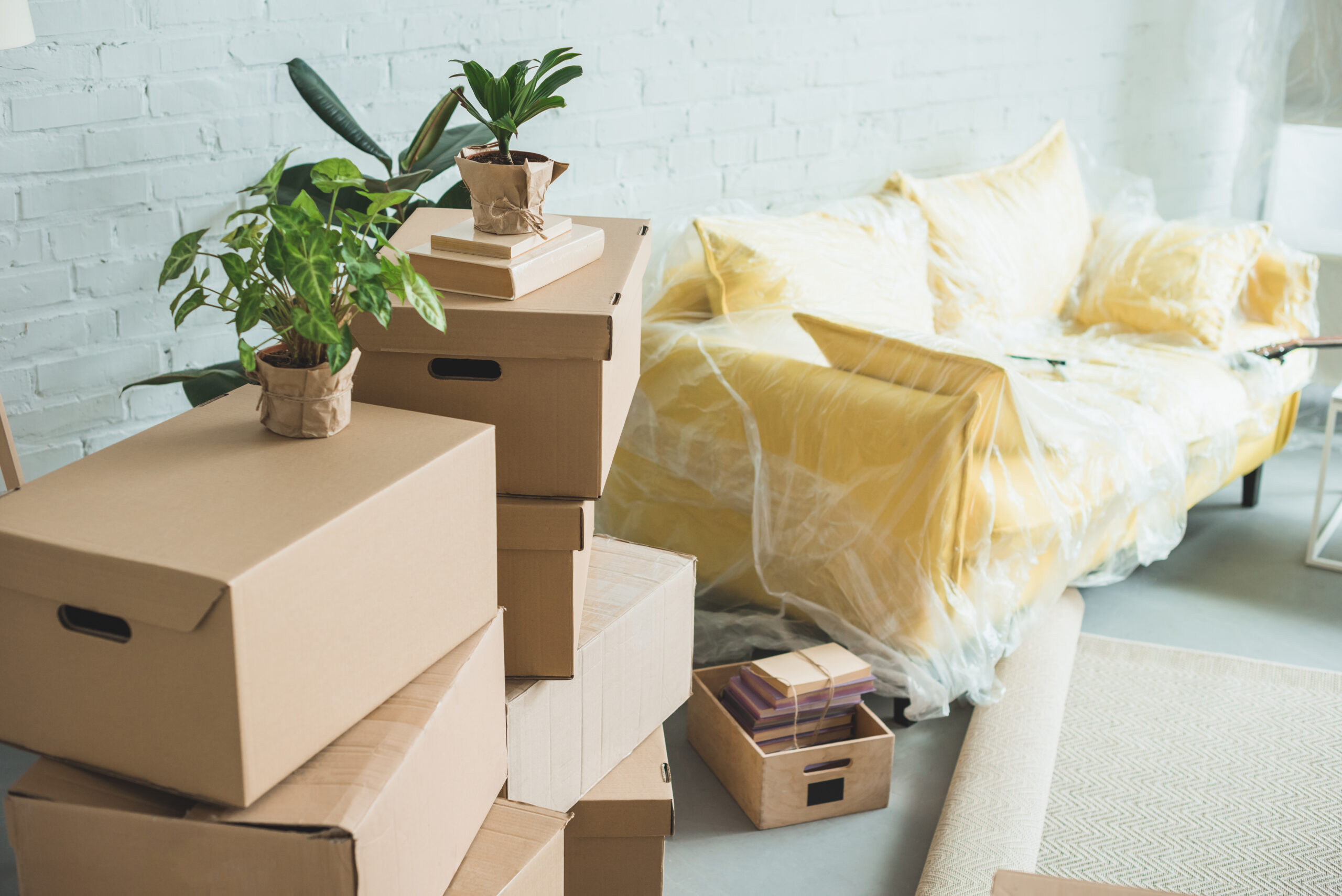Blog
- Details
- Hits: 188
Whether your home is a quaint countryside cottage or an urban apartment, creating an illusion of spaciousness within your main rooms is an invaluable skill. As enthusiasts of interior design, our team at Warren Powell-Richards are thrilled to help you with a question we are often asked: “How do you make a room look bigger?” Through our collection of strategies, each chosen to help you maximise the feeling of space and light in your home, you can transform your rooms.
The Illusion of Light
Let’s start by unveiling the magic of light, arguably one of the most powerful elements in interior design. Natural light possesses an unparalleled ability to create an airy and open atmosphere. To harness its potential, consider using sheer curtains or blinds to infuse your rooms with warmth.
The Power of Colour
In interior design, colour holds transformative capabilities. The right colour becomes a crucial tool when creating a sense of spaciousness. You should opt for lighter shades that bring an aura of airiness. When asked how to make a room look bigger, we suggest soft pastels, pale neutrals, and cool tones like serene blues and tranquil greens.
Clever Furniture Selection
The art of furniture selection is always a balance between functionality and aesthetics. In your quest to create the impression of space always look for furniture that serves a dual purpose. Think storage ottomans, sleek sofa beds or nesting coffee tables that offer style and practicality. Additionally, furniture with exposed legs establishes a sense of visual openness, allowing light to infiltrate beneath and around.
Streamlined Storage Solutions
A decluttered space promotes mental clarity and contributes to the illusion of space, so streamlined storage solutions are your friend here. Consider built-in shelves, floating units, and wall-mounted cabinets because these pieces optimise storage and maintain an uncluttered floor, heightening the perception of spaciousness.
Mirrored Magic
Among the most transformative tools in an interior designer’s toolkit are mirrors. So, how to make a room look bigger with mirrors? Well, mirrors hold a unique ability to transform space as their reflective nature not only amplifies light but also creates an illusion of depth. Consider placing a substantial mirror in a strategic location as this single addition can instantly double the perceived dimensions of a room.
Vertical Elegance
A journey into space enhancement wouldn’t be complete without exploring vertical elements. By drawing the eyes upward, you invite a sensation of heightened ceilings and, consequently, expanded room proportions. Embrace vertical stripes on walls for an elongating effect. Incorporate tall bookcases or floor-to-ceiling curtains that guide the gaze upward, effectively creating a captivating sense of elevation.
Decluttering Zen
The ideology of minimalism isn’t just a design trend; it’s a philosophy that celebrates the synergy between simplicity and spaciousness. As you work out how to make a room look bigger than its physical dimensions, you should champion the art of minimalism. Decorate surfaces with intention, displaying only a few meticulously selected items.
Multi-Functional Zones
One of the hallmarks of successful interior design is creating distinct functional zones within a room. This principle works seamlessly to generate a sense of space. Use rugs, creative furniture placement, or diverse lighting to create different zones. Each zone contributes to the overall design while enjoying a seamless transition between various activities.
Transparency with Glass
The transparency of glass introduces an element of magic into your design repertoire. Consider incorporating glass furniture such as transparent chairs or coffee tables. Furthermore, glass panels can function as elegant room dividers, effectively segmenting spaces without obstructing the visual flow.
The Wonder of Open Shelving
The allure of open shelving carries the potential to redefine the perception of space. Consider the use of open shelving, particularly in kitchens and living areas. Thoughtfully arrange items on the shelves, optimising storage efficiency and contributing to an uncluttered, expansive atmosphere.
Seamless Flooring Transition
The choice of flooring material and its flow from room to room play a pivotal role in establishing a sense of spaciousness. The continuous flow of flooring creates an uninterrupted visual journey, effortlessly guiding the eye from one area to another. If possible, try and choose the same flooring material for all your main rooms as this will help forge a harmonious and spacious atmosphere.
Smart Furniture Arrangement
Strategic furniture arrangement serves as the cornerstone of interior design. When aiming to increase the perceived dimensions of a room, use furniture arrangement as a defining tool. Consider pulling furniture slightly away from walls – a technique that introduces a sense of depth. By introducing cosy conversational clusters, you will create an intimate atmosphere while at the same time, preserving a feeling of spaciousness.
Great Interior Design is a Balance of Creativity and Functionality
In the world of interior design, the notion of space extends beyond physical dimensions. With each brushstroke of design finesse, you are adding square footage to your main rooms and creating an atmosphere of peace, tranquillity and beauty.
If you would like more expert advice on all things property related our team at Warren Powell-Richards would love to hear from you. Please drop in to see us or email at This email address is being protected from spambots. You need JavaScript enabled to view it..
- Details
- Hits: 177
As the vibrant summer days give way to the crisp and colourful autumn season, preparing your garden for the changing conditions will be on top of any green-fingered gardener’s list.
By taking the proper steps now, you can ensure your garden remains a picturesque and inviting space throughout this season and next.
We’ll provide you with our expert tips to get your garden ready for autumn. From tidying up and planting to protecting your plants and embracing the stunning autumn colours, these insights will help you create a thriving and visually appealing garden.
- Tidy Up and Clear Out
To lay the foundations for a healthy and well-maintained garden during autumn, it’s essential to tidy up and clear out any remnants of the previous season. Follow these steps to prepare the ground:
- Begin by removing fallen leaves, debris, and weeds from flower beds, lawns, and pathways. This will prevent them from suffocating your plants and obstructing the essential sunlight they need.
- Take the time to trim back any overgrown shrubs, deadhead the flowers, and prune summer-flowering plants that have finished blooming. This encourages new growth and helps maintain a tidy appearance in your garden.
- As you collect leaves and plant material, consider creating a compost pile. Composting is an eco-friendly way to dispose of garden waste. It provides nutrient-rich compost that can be used to nourish your garden in the future.
- Plant for Autumn Splendour
One of the joys of autumn gardening is the opportunity to introduce a vibrant array of colours and textures to your outdoor space. Here are some planting ideas to enhance the beauty of your garden during this season:
- Opt for autumn-flowering plants such as asters, chrysanthemums, and sedums. These vibrant blooms will bring delightful pops of colour to your garden.
- Consider incorporating ornamental grasses. These will provide captivating texture and gentle movement as they sway in the autumn breeze. Their feathery plumes and graceful arching blades can add a touch of elegance to your garden.
- Don’t forget to plant evergreen shrubs or trees that offer year-round interest and structure. Their foliage will provide a green backdrop even as other plants prepare for winter.
- Protect and Preserve
As the temperature drops and weather conditions change, protecting your garden’s delicate plants from the potential harm of autumn’s chill is important. Consider the following measures to safeguard your plants:
- Cover delicate plants with horticultural fleece or cloches to provide a protective barrier against frost and cold winds. This extra layer of insulation can make a significant difference in preserving the health of your plants.
- Move potted plants to more sheltered areas or indoors to shield them from freezing temperatures. A conservatory, porch, or greenhouse should provide the necessary protection.
- Apply a layer of organic mulch, such as well-rotted garden compost or bark chips, around the base of trees, shrubs, and perennial plants. This helps insulate the roots, retain moisture, and suppress weed growth, ensuring the well-being of your garden during the colder months.
- Embrace the Colours of Autumn
Autumn offers a breathtaking display of colours, and by embracing the seasonal palette, you can create a captivating and visually appealing garden. Consider the following tips:
- Choose plants with foliage that changes colour during autumn, such as Japanese maples, ornamental cabbages, or Virginia creepers. These varieties will infuse your garden with rich red, orange, and gold hues.
- Incorporate plants that bear berries or seed heads, such as holly or echinacea. These add visual interest and attract birds, bringing a lively touch to your garden.
- Introduce decorative elements like pumpkins, gourds, and ornamental lanterns to create a festive ambience. These additions will add charm and warmth, celebrating the spirit of autumn in your garden.
Preparing your garden for autumn is a labour of love that ensures its health, beauty, and longevity. By tidying up, planting seasonally appropriate varieties, protecting your plants, and embracing the stunning colours of the season, your garden will continue to thrive even as the temperature drops.
Thinking of Selling Your Property During the Autumn-Winter Season?
If you’re thinking of selling your property during autumn or winter then contact the team at Warren Powell-Richards for a friendly initial chat. As experts in the property market, we’re on hand to make your move smoother. Email us at This email address is being protected from spambots. You need JavaScript enabled to view it. to find out how we can help.
- Details
- Hits: 170
Moving to a new home is an exciting milestone, but packing up your entire life can be a source of stress and anxiety. However, fear not because we have some moving home packing tips for you! With proper planning and organisation, the moving home packing process will be much more manageable.
In this blog, the team at Warren Powell-Richards will share our moving home packing tips to help you achieve a pain-free move with minimum stress.
So let’s get into it!
- Create a Packing Timeline
Start your moving home preparations by creating a well-structured packing timeline.
- Begin early, ideally at least six weeks before your moving day.
- Break down your packing tasks into manageable chunks, focusing on one room at a time.
- Make a checklist of items to pack in each room, along with deadlines for completing each task.
By spacing out the packing process, you’ll avoid feeling overwhelmed and reduce the last-minute rush as moving day approaches.
- Get Rid of Unwanted Items
Before you start packing, take the opportunity to declutter items you no longer need. Go through each room methodically and sort your belongings into three categories:
- Keep
- Donate
- Discard
This will make your move more efficient and will help you save on moving costs by reducing the number of items to be transported. Plus, donating usable items will give you the satisfaction of helping those in need.
- Gather Packing Supplies in Advance
There’s nothing more frustrating than realising you’re running out of supplies in the middle of the packing process. Avoid this by gathering all the necessary packing materials well in advance. Go online and stock up on sturdy moving boxes of various sizes, bubble wrap, packing paper, packing tape, labels and markers. Having these supplies to hand will prevent last-minute scrambling, and ensure that your belongings are adequately protected during the move to your new home.
- Pack Room by Room
To stay organised during your move, pack one room at a time. This method ensures that items belonging together stay together, making unpacking at your new home a breeze. As you pack, label each box with its contents and the room it belongs in. To take it a step further, consider colour-coding the boxes for each room. This visual cue will help you and your movers identify where each box should go ready for unpacking.
- Use the Right Packing Techniques
Proper packing techniques can make a huge difference in protecting your belongings during the move. For fragile items like glassware and dishes, use generous layers of bubble wrap or packing paper to ensure they are well-padded. Utilise dividers or crumpled paper to prevent items from knocking against each other during transport. For clothes, keep them on hangers and cover them with bin bags, creating makeshift garment bags that will protect them and make unpacking much quicker.
- Pack a First-Day Essentials Box
In the hustle and bustle of moving, it’s easy to lose track of the items you’ll need upon arrival at your new home. Prepare a “first-day essentials” box containing the items you’ll require before you’ve had a chance to unpack. This box should include:
- Toiletries, loo roll and medications
- Change of clothes
- Important documents (such as identification and medical records)
- Phone chargers
- Essential kitchen items (tea and coffee, milk, mugs, kettle)
- Any other necessities that will help you get through the first day comfortably.
- Seek Professional Help
If the idea of packing overwhelms you or you don’t have the time to do it yourself, consider hiring professional packers. They have the expertise and experience to pack your belongings efficiently and securely, saving you time and ensuring that your possessions are well taken care of during the move. While this may be an additional expense, the peace of mind and time saved can be well worth it, especially if you have valuable or delicate items that require special attention.
- Label Electronics and Cables
Disassembling electronics can be a daunting task! It becomes much easier if you label each cable and component as you go. Take pictures of the setup before disassembling to help you reassemble them correctly in your new home. Place all the cables and accessories in labelled bags and keep them together with the corresponding electronic device. Additionally, consider using cable organisers or ties to prevent tangles and confusion during unpacking.
- Secure Hazardous Materials Separately
Certain items, such as cleaning materials, aerosol cans, and flammable liquids, are considered hazardous and require special handling. Keep these items separate from your regular packing and transport them safely or dispose of them responsibly before the move. Check with your local waste management facility or follow your area’s guidelines for the disposal of hazardous materials.
Moving Home Doesn’t Have to be Stressful!
Planning ahead, decluttering, using proper packing techniques, and seeking professional assistance are key factors in ensuring a successful and stress-free move.
If you are planning on moving soon, embrace the excitement of starting a new chapter in your life and take our moving home packing tips on board.
As your local estate agents come and speak to a member of our team at Warren Powell-Richards or email us at This email address is being protected from spambots. You need JavaScript enabled to view it. and let us be your guide to a seamless and enjoyable moving experience.
- Details
- Hits: 205
If you’re selling a property, you may have heard about Capital Gains Tax and may be wondering whether or not you’re liable to pay it. As experts in property, our team at Warren Powell-Richards are on hand to give you all the guidance and information you need.
Capital Gains Tax – An Overview
Capital Gains Tax (or CGT) is taxation on the profits if you sell an asset that has grown in value. This definition can be confusing, so here’s an example of how it works.
If you bought a property for £400,000 and then sold it for £450,000, the profit you have made is £50,000. That means you would need to pay CGT on the £50,000 profit, not on the full sale price of £450,000.
Do All Property Sales Incur CGT?
Not every property sale is liable for Capital Gains Tax. If the property you’re selling is your primary residence, you’ll automatically have eligibility for Private Residence Relief so long as:
- You’ve lived in the property as your primary home throughout the entire period you’ve owned it.
- Part of it hasn’t been let out (this doesn’t include having lodgers).
- No part of the property has been used exclusively for business purposes.
- Its grounds are under 5000sqm.
- The property wasn’t purchased solely to make gains.
For these reasons, most sellers won’t be liable for CGT.
When Must CGT Be Paid When Selling A Property?
If you’re selling a second home, you’ll usually need to pay CGT.
You’ll also usually be liable for Capital Gains Tax if you’re selling a buy-to-let home.
If you inherit a property, you won’t need to pay any Capital Gains Tax until you decide to sell it, and if you’re gifting property to your civil partner, spouse, or a registered charity, no CGT is usually owed.
How Do I Calculate Capital Gains Tax?
To calculate the amount of CGT you owe, you need to subtract the price you paid for your property from its selling price to work out the profit. The government website has a handy online calculator that you can enter this figure into to determine the amount you need to pay, but there are some considerations to take into account first, since they could affect how much you owe overall:
- The Capital Gains Allowance.
- Your share of a jointly owned property.
- Allowed deductions such as estate agent and solicitors’ fees and home improvements.
- Tax relief.
- Special circumstances such as compulsory purchase.
We always recommend you consult a Capital Gains Tax professional who will be able to answer questions relating to your individual circumstances.
Selling Your Home
If you’re ready to sell a property, whether it’s your primary residence, a buy-to-let property that you own, or a second home, get in touch with us here at Warren Powell-Richards. We can help you with all your selling needs, and as experts you can count on us to offer you an exceptional level of service.
- Details
- Hits: 168
Moving home can be a stressful experience for everyone involved, but it can be incredibly challenging if you have a pet.
Whether it’s a dog, cat, bird, or something a little more exotic, your furry (or feathered) friend is likely a significant part of your family and you want to make sure they have a smooth transition to their new home.
Here are a few tips to help make the move with your pet as stress-free as possible:
- Plan ahead: Moving with a pet requires a little extra planning, so make sure you give yourself plenty of time to get organized. Consider factors such as pet-friendly housing, transportation arrangements, and any necessary documents or vaccinations. If you’re moving out of the country, you’ll need to research the specific requirements for bringing your pet into the new country, such as a pet passport or other documentation. It’s also a good idea to ensure your pet is up to date with their vaccinations and has a current identification microchip.
- Update your pet’s ID: Make sure your pet’s collar and ID tags are updated with your current contact information, including your new address and phone number. This is especially important if you’re moving out of the country, as it will make it easier to reunite with your pet if they become lost during the move.
- Keep your pet’s routine as consistent as possible: Moving can be unsettling for pets, so try to maintain their usual routine as much as possible during the transition. This includes feeding, exercise, and any necessary medication. If you have a dog, it’s a good idea to take them for a long walk before the move to tire them out and help them relax during the journey.
- Keep your pet safe during the move: If you’re driving to your new home, make sure your pet is properly secured in a crate or harness to keep them safe during the journey. If you’re flying, check with the airline to see what their requirements are for transporting pets. Some airlines have restrictions on the size and type of pet that can be transported in the cabin, so it’s essential to do your research ahead of time.
- Consider hiring a pet sitter or boarding your pet: If the move is going to be particularly stressful or disruptive, consider hiring a pet sitter or boarding your pet until you’re settled in your new home. This can help reduce anxiety and ensure your pet is well taken care of while you’re busy with the move. If you do decide to board your pet, make sure to choose a reputable facility that will provide them with proper care and attention.
- Give your pet plenty of love and attention: Moving can be a hectic and chaotic time, but it’s essential to make sure your pet feels loved and reassured. Spend quality time with them, and make sure they have a comfortable place to rest and relax. This could be a crate or carrier, a designated room, or a specific spot in your new home.
- Explore the neighbourhood: Once you’re settled into your new home, take the time to explore with your pet. This can help them get used to their new surroundings and make new friends. If you have a dog, make sure to familiarise yourself with the area and find a nearby dog park or walking trail where they can stretch their legs.
In conclusion, buying a property with a pet can be a stressful experience, but with a little planning and preparation, you can make it a smooth and stress-free transition for both you and your pet. Remember to give yourself plenty of time to get organized, update your pet’s ID, maintain their routine, keep them safe during the move, and give them plenty of love and attention. With these tips in mind, you and your pet can enjoy your new home together in no time.
If you’re ready to make a move and are looking for an experienced and knowledgeable estate agent to help guide you through the process, we’re here to help. Contact Warren Powell-Richards to learn more about how we can assist with your property search and make the moving process as smooth and stress-free as possible. We look forward to working with you!










ALTON | FARNHAM | GODALMING | GRAYSHOTT | HASLEMERE | LONDON